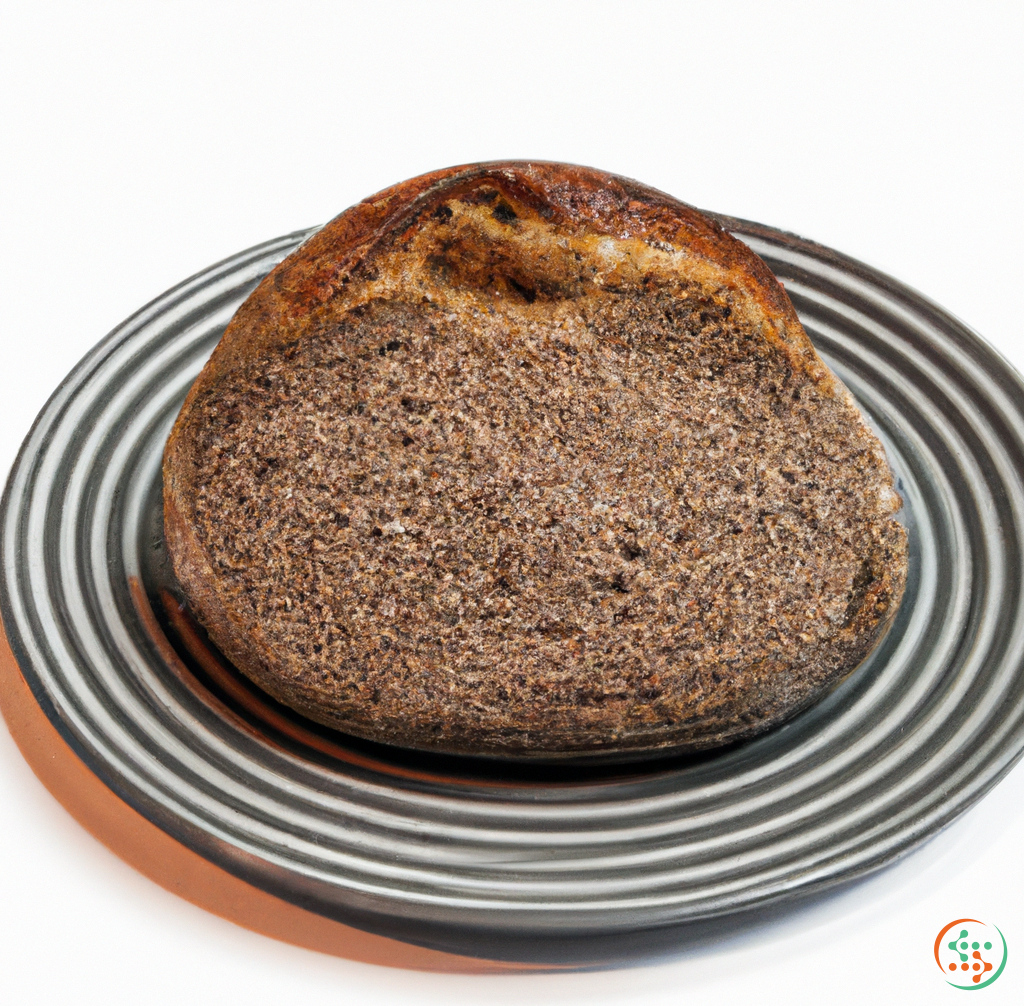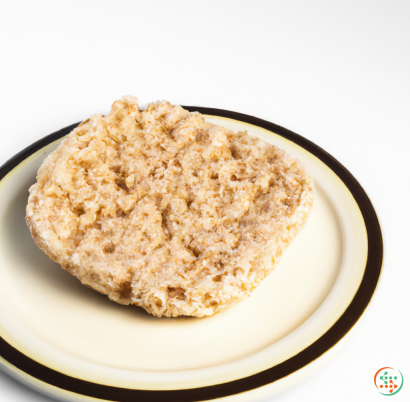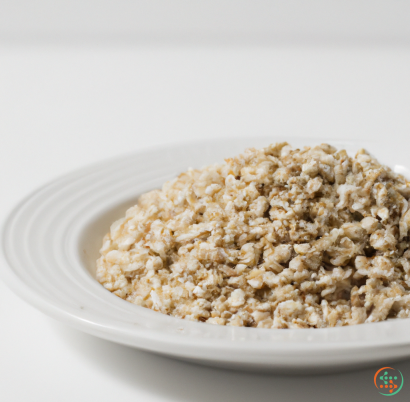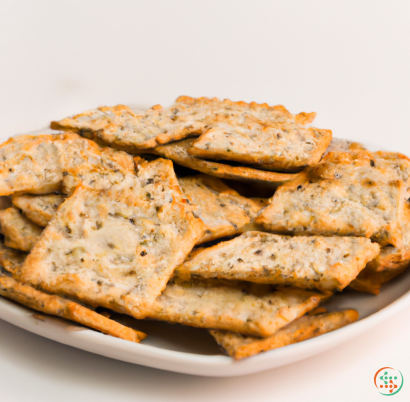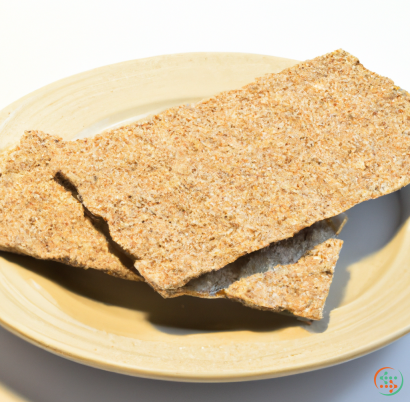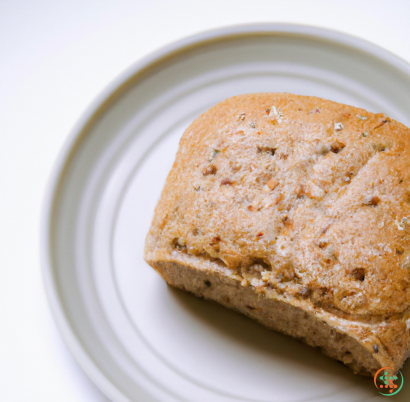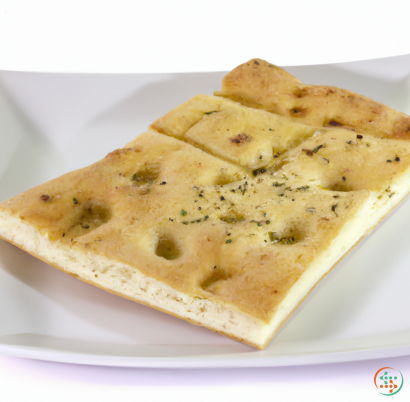Rye Bread
For the nearest supermarket or bakery, Rye bread is often the last one that is taken off of the shelves. This unique and unique-tasting loaf of bread has been around for centuries, but has become increasingly popular for its distinctive flavor profile and healthy benefits.
Rye bread is a type of bread made from a mixture of rye flour and some other flours. The flour used could consist of wheat, oats, barley, or other grains. Rye flour is a dark flour with a strong nutty flavor and a granular texture. Rye flour contains more soluble fiber and yields a denser texture than wheat flour.
There are multiple variations of rye bread. Light rye bread is made with a combination of white flour and rye flour while dark rye bread is made with more rye flour. Pumpernickel is dark rye bread made with a combination of whole grain rye flour, rye meal, and ground coarse rye chops.
Because of its distinct flavor, Rye bread has been around for centuries and is popular in many countries worldwide. It was first created in Europe before being brought to America. During the mid-1600s, Rye bread became the most common type of bread in Germany, Sweden, and Switzerland, and kept this reputation for centuries.
Rye bread due to its popularity and higher fiber content, has become a healthier alternative to wheat bread. Rye bread has more fiber than wheat and other grains. It contains soluble fiber, which helps lower bad cholesterol levels, decreasing the risk of heart disease. Rye also contains omega-3 fatty acids, which can help reduce inflammation throughout the body. Additionally, rye contains magnesium, which supports muscle and nerve functions, energy production, and blood pressure regulation.
In terms of flavor, rye bread tends to have a sharp, pungent taste with a sourdough-like odor. The dark color of rye bread is caused by the presence of “fermentation agents,” like beer and wine, which are added during the mixing process. This fermentation process gives rye bread its unique and complex flavor.
Rye bread is versatile and can be used in a variety of recipes. Due to its unique flavor profile, it can be paired with different cheeses and meats for a savory sandwich or topped with cream cheese for a sweet option. Additionally, rye bread has a robust flavor that adds an extra depth of flavor to salads, soups, and tartines.
Making Rye bread requires a lot of time and effort, so it’s best to purchase a pre-mixed rye bread mix at the grocery store or order a loaf from the bakery. When you buy Rye bread, look for loaves that are dark-colored, have visible grains, and sound hollow when tapped. Once you get it home, store the bread in a paper bag and eat it within three days. If you’re not sure how to store any leftover bread, you can always try freezing it and then slicing it as needed.
Overall, Rye bread is a unique and flavorful type of bread that has a wide range of health benefits. It can be found in most grocery stores and bakeries, and makes a tasty addition to any meal or snack. If you’re looking for a nutritious, delicious, and unique bread option, Rye bread is an excellent choice.
The Travel of Rye Bread from Field to Dinner Plate
Rye bread is a staple in many dinner tables today, but how does it make it from the field to the plate? In essence, the complete life cycle of rye bread involves the planting and harvesting of rye crops, milling the rye grains into flour, using the flour to make the dough, baking the dough in an oven, and then packaging and delivering the bread so it can be enjoyed at dinner time. The journey of rye bread covers numerous steps, numerous people, and multiple processes, so let’s take a look at each one in detail.
Rye as a Crop
Rye, scientifically known as Secale cereale, is an annual grassy crop. It can grow in cooler climates than any other cereal grain crop and its extensive root system makes it an excellent option for soil management in areas prone to erosion. Rye is widely cultivated in parts of the world where the growing season is short and the summers are cool. It is also a major crop in areas that receive heavy snowfalls, because rye is relatively resistant to frost.
Rye is widely used for human consumption and is most commonly known for its use in bread making. Rye is a nutritionally dense grain and is high in protein, dietary fiber, and healthy phytochemicals. Its nutritional profile is a great match for many diets and makes this whole grain a popular choice for bakers.
Planting, Growing, and Harvesting
The rye crop is planted in fields in the early part of the year, as long as the ground isn’t frozen. Rye grows best in well-drained, fertile soil high in nitrogen, with moderate moisture, and in direct sunlight.
Rye begins to flower in June and the grain heads ripen in August.
Once the grain kernels are mature, the rye is ready for harvest. Rye harvested for grain must be cut before the kernels are too mature or else the grain will shatter and fall from the stalk. The ripe grain heads must be dry before harvesting, as well, so they can easily be stored.
Harvested rye grain is usually cleaned with a fanning mill, which removes any dirt, weeds, and other materials that had become mixed in with the grain during planting and growing.
Milling the Rye
Once the rye has been harvested and cleaned, it is ready to be milled. This involves grinding the rye grains into a coarse meal. The grains are typically run through a series of rotating stones, which grind the grains into the desired consistency.
The milled rye can be used in a variety of recipes, but it is most commonly used to make rye bread.
Making the Dough
Rye bread is made by mixing the milled rye grains with yeast, water, and other ingredients such as flour, salt, and baking powder. The dough is kneaded into a shape and then left to rest and rise until it has doubled in volume.
Baking the Bread
The bread dough is then placed into a bread pan and baked in an oven at a temperature of 375°F (190°C). The baking process, or baking cycle, consists of five stages: pre-heat, hot rise, baking, cooling, and slicing. During the baking cycle, the bread rises and becomes crusty on top, and the end product should feel light and fluffy.
Packaging and Delivery
Once the rye bread is baked and cooled, it’s time to package and deliver it. Rye bread is usually packaged in air-tight containers to keep it as fresh as possible for consumption.
Once the bread is packaged, it can be shipped or delivered to restaurants, grocery stores, or online retailers. From here, consumers can purchase and enjoy the rye bread.
Conclusion
Rye bread is a popular food item enjoyed all over the world, but few people think about the process that goes into making it. From the planting and harvesting of rye grains to baking and packaging the bread, there are numerous steps and people involved in transforming rye grain into rye bread. Knowing each step in the process gives us a greater appreciation for the process and the end product. Next time you’re enjoying a slice of rye bread, take a moment to appreciate the journey it has made to get there.
| Beta-Carotene | 0.004 mg | |
| Vitamin E | 0.33 mg | |
| Vitamin K | 0.0012 mg | |
| Vitamin C | 0.4 mg | |
| Vitamin B1 | 0.43 mg | |
| Vitamin B2 | 0.34 mg | |
| Vitamin B3 | 0.00381 grams | |
| Vitamin B4 | 0.0146 grams | |
| Vitamin B5 | 0.44 mg | |
| Vitamin B6 | 0.08 mg | |
| Vitamin B9 | 0.11 mg |
| Calcium | 0.073 grams |
Daily Value 1.3 g
|
| Iron | 0.00283 grams |
Daily Value 0.018 g
|
| Magnesium | 0.04 grams |
Daily Value 0.4 g
|
| Phosphorus | 0.125 grams |
Daily Value 1.25 g
|
| Potassium | 0.166 grams |
Daily Value 4.7 g
|
| Sodium | 0.603 grams |
Daily Value 2.3 g
|
| Zinc | 0.00114 grams |
Daily Value 0.011 g
|
| Copper | 0.19 mg |
Daily Value 0.9 mg
|
| Manganese | 0.82 mg |
Daily Value 0.0023 g
|
| Selenium | 0.0309 mg |
Daily Value 0.055 mg
|
| Fluoride | 0.051 mg |
Daily Value 0.004 mg
|
| Tryptophan | 0.096 grams | |
| Threonine | 0.255 grams | |
| Isoleucine | 0.319 grams | |
| Leucine | 0.579 grams | |
| Lysine | 0.233 grams | |
| Methionine | 0.139 grams | |
| Cystine | 0.173 grams | |
| Phenylalanine | 0.411 grams | |
| Tyrosine | 0.213 grams | |
| Valine | 0.379 grams | |
| Arginine | 0.325 grams | |
| Histidine | 0.182 grams | |
| Alanine | 0.299 grams | |
| Aspartic Acid | 0.442 grams | |
| Glutamic Acid | 2.603 grams | |
| Glycine | 0.302 grams | |
| Proline | 0.909 grams | |
| Serine | 0.417 grams |
| Total Sugars | 3.9 grams |
per 100g
|
| Myristic acid (14:0) | 0.01 grams |
|
| Palmitic acid (16:0) | 0.39 grams |
|
| Stearic acid (18:0) | 0.23 grams |
|
| Total Saturated fatty acids: | 0.63 g | |
| Oleic acid (18:1) | 1.3 grams |
|
| Palmitoleic acid (16:1) | 0.01 grams |
|
| Total Monounsaturated fatty acids: | 1.31 g | |
| Linolenic acid (18:3) | 0.06 grams |
|
| Linoleic acid (18:2) | 0.74 grams |
|
| Total Polyunsaturated fatty acids: | 0.8 g | |
